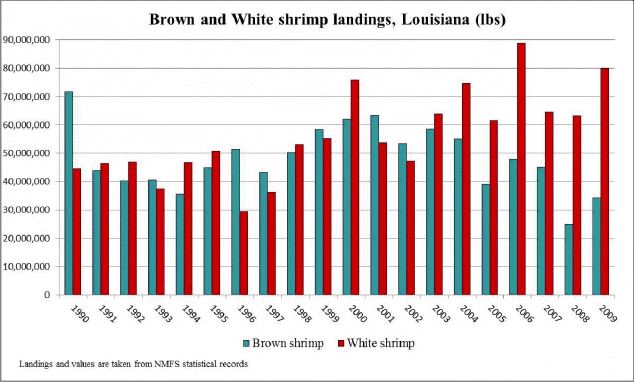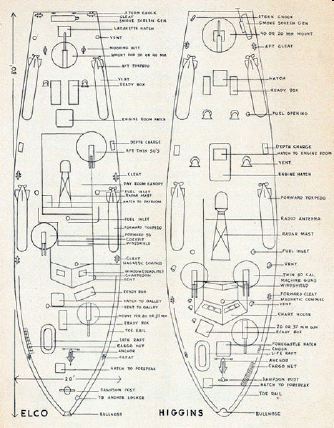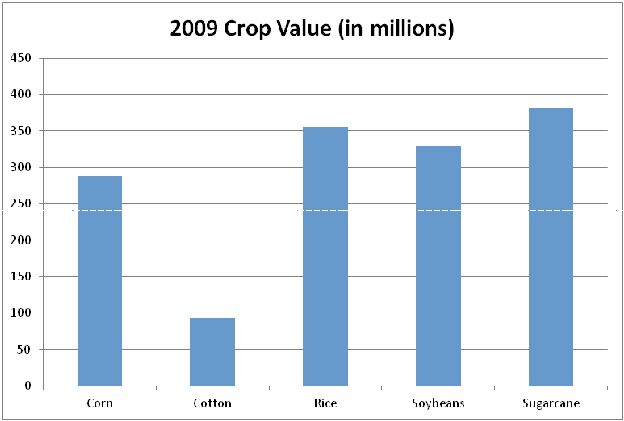Multiple Choice
Identify the
choice that best completes the statement or answers the question.
|
|
|
1.
|
What can result when the available resources are
not sufficient to meet the wants of the people?
a. | depression | b. | prosperity | c. | scarcity | d. | surplus |
|
|
|
Read the passage and then answer the next question.
Louisiana’s first French settlers eagerly traded with nearby groups of Indians for
food and other items of value. In exchange for corn - and, later deerskins - the first colonists
offered the Indians French-made goods including axes, knives, blankets, shirts, mirrors, and
needles.
|
|
|
2.
|
What type of economic system is described in the
passage?
a. | command economy | b. | market economy | c. | mixed
economy | d. | traditional
economy |
|
|
|
1721
Trade | Agreement | French | Natives | a meter of woolen cloth or
one axe | four dressed deerskins |
one blanket or tomahawk | two dressed
deerskins | two-thirds of a pound of gunpowder or
twenty gun flints | one dressed deerskin | | |
|
|
|
3.
|
What conclusion can be drawn from the
table?
a. | Deer were scarce in the Louisiana
colony. | b. | Natives did not have access to woolen
cloth. | c. | France produced very little gunpowder in
1721. | d. | Natives already owned many guns when the French
arrived. |
|
|
|
4.
|
What type of economic system is detailed in this
agreement?
a. | command economy | b. | market economy | c. | mixed
economy | d. | traditional
economy |
|
|
|
5.
|
What is the name given to an economic practice in
which a mother country controls the markets and resources of its colonies in order to acquire
wealth?
a. | barter | b. | free enterprise | c. | mercantilism | d. | monopoly |
|
|
|
6.
|
Which explains why mercantilism was unsuccessful in
the Louisiana colony?
a. | The American Revolution put a strain on European
relationships. | b. | Louisiana did not
have as many natural resources as France had hoped.
| c. | Neither France nor Spain could provide enough trade
goods to meet the colonists’ needs. | d. | During the French
and Indian War the King needed to spend more on defense than on trade
goods. |
|
|
|
Read the passage, and then answer the next question(s). 
|
|
|
7.
|
What conclusion could be drawn about this 2002 tax
incentive?
a. | The credit will lead directly to a large deficit
in Louisiana’s tax base. | b. | Film producers
will want to bring in their own labor force save money. | c. | Film producers will not want to work in Louisiana because of the large minimum
spending requirement. | d. | Thousands of jobs
will be created and goods and service industries will benefit from the influx of people and
income. |
|
|
|
8.
|
How could this tax incentive affect
Louisiana’s rate of unemployment?
a. | It will have no effect on unemployment or the skills
needed for a job. | b. | It will increase
because it allows producers to receive a credit for non-resident
labor. | c. | It will decrease because it offers an additional
incentive for producers who use an in-state labor force. | d. | It will increase because the minimum spending requirement is too high
and will limit a producer’s ability to offer jobs with competitive
pay. |
|
|
|
9.
|
Which was a direct result of the 2002 tax
incentives for film production?
a. | Louisiana lost a lot of tax
revenue. | b. | One large production facility has been built in
Louisiana. | c. | The film industry
in Louisiana grew rapidly, and the state has become known as “Hollywood
South.” | d. | Less than 300
films have been made since their adoption due to spending limits imposed on
producers. |
|
|
|
10.
|
Which is an example of goods?
a. | an oil change | b. | a new wardrobe | c. | a church
sermon | d. | a waiter at a
restaurant |
|
|
|
11.
|
Which is an example of a
service?
a. | a concert | b. | canned foods | c. | designer
jeans | d. | a smart phone |
|
|
|
12.
|
Which of the following describes a natural
resource?
a. | goods created and used to produce other goods and
services | b. | gifts of nature that can be used to produce goods and
services | c. | people doing physical or mental work to produce goods or
services | d. | people who assume the risk of organizing productive
resources to make a profit |
|
|
|
13.
|
What are capital resources?
a. | money invested in a business | b. | useful resources from Earth | c. | people producing goods and services | d. | tools used to produce commodities |
|
|
|
14.
|
Which is an example of a human
resource?
a. | bacon | b. | chef | c. | jeans | d. | oil |
|
|
|
15.
|
What condition results when people and societies
try to satisfy unlimited wants with limited resources?
a. | consumerism | b. | debt | c. | mercantilism | d. | scarcity |
|
|
|
Use the graph to answer the following question(s). 
|
|
|
16.
|
What conclusion about brown shrimp could be drawn
from the data?
a. | They are more popular than white
shrimp. | b. | They are harder to catch than white
shrimp. | c. | They were more expensive in 2008 than in
1990. | d. | Their populations have been steadily increasing since
1990. |
|
|
|
17.
|
What conclusion about shrimp is supported by the
data?
a. | White shrimp are easier to
catch. | b. | White shrimp are bigger so they weigh
more. | c. | Brown shrimp are more popular than white
shrimp. | d. | The population of brown shrimp has declined since
1990. |
|
|
|
18.
|
How might this data have affected seafood
restaurant diners from 2003-2009?
a. | Diners paid less for dishes containing brown
shrimp. | b. | This data has no impact on dining in a seafood
restaurant. | c. | Restaurants
offered a menu based heavily on brown shrimp dishes. | d. | Diners were offered a wide variety of dishes containing white
shrimp. |
|
|
|
Read the passage and then answer the next question.
Jillian receives $100 for her birthday. She really wants a new outfit. However, she does
not have enough money to buy the pair of jeans and the sweater she wants. She decides to buy the
jeans now and hope that she will get the sweater for Christmas.
|
|
|
19.
|
What was Jillian’s opportunity
cost?
a. | the jeans | b. | popularity | c. | the
sweater | d. | one hundred
dollars |
|
|
|
20.
|
What was Jillian’s opportunity
benefit?
a. | the jeans | b. | popularity | c. | the
sweater | d. | one hundred
dollars |
|
|
|
21.
|
What are the characteristics of a traditional
economy?
a. | government directed decisions about
resources | b. | agricultural basis, bartering,
customary | c. | government regulations, individual
control | d. | individual control, producers predict consumer
response |
|
|
|
22.
|
What are the characteristics of a command
economy?
a. | government directed decisions about
resources | b. | agricultural basis, bartering,
customary | c. | government regulations, individual
control | d. | individual control, producers predict consumer
response |
|
|
|
23.
|
What are the characteristics of a market
economy?
a. | government directed decisions about
resources | b. | agricultural basis, bartering,
customary | c. | government regulations, individual
control | d. | individual control, producers predict consumer
response |
|
|
|
24.
|
How does a market economy differ from a command
economy?
a. | Consumers answer the four basic economic questions
instead of producers. | b. | Producers are free
to answer the four basic economic questions instead of consumers. | c. | Producers and consumers are free to answer the four basic economic questions
without government involvement. | d. | Producers work
with the government to answer the four basic economic questions instead of just having the government
decide. |
|
|
|
25.
|
How did the Mississippi River contribute to the
development of Louisiana’s market economy in the 1800s?
a. | Sport fishing along the river became a profitable
tourist industry. | b. | Fish caught in the
river became Louisiana’s largest export at the time. | c. | Producers and consumers from other states used the river to reach the port at
New Orleans. | d. | Many jobs were
created when Louisiana built the Old River Control Structure to help control yearly
flooding. |
|
|
|
26.
|
Which historical event stagnated Louisiana’s
economy for decades?
a. | The Civil War | b. | The Cold War | c. | The War of
1812 | d. | The French and Indian
War |
|
|
|
27.
|
 How is this diagram
connected to Louisiana’s manufacturing history? How is this diagram
connected to Louisiana’s manufacturing history?a. | Higgins’ design had limited commercial potential,
so it was not manufactured on a large scale. | b. | The specialty
parts for Higgins’ shallow water boats made it impossible to mass produce
locally. | c. | The military success of Higgins’ boat design led
to the development of seven factories and 20,000 jobs. | d. | Higgins Industries only employed specially trained United States military
personnel in their manufacturing plants. |
|
|
|
Use the graph below to answer the following question(s). 
|
|
|
28.
|
Based on the information in the graph, what can be
concluded about cotton production in Louisiana?
a. | The need for cotton in textiles has increased
sharply. | b. | Cotton was sold at a lower price than other cash
crops. | c. | Cotton had less of an impact on the farm industry than
other crops. | d. | There was less
cotton harvested in comparison to other cash crops. |
|
|
|
29.
|
Study the graph. In planning for 2010, what
decision might a Louisiana cotton farmer make based on this data?
a. | keep cotton production at the same
level | b. | raise livestock instead of growing cotton
| c. | grow another kind of crop to increase crop
value | d. | plant more cotton in the same area risking
overcrowding |
|
|
|
30.
|
In 2009, what was Louisiana’s most valuable
food commodity?
a. | cattle | b. | poultry and eggs | c. | rice | d. | sugarcane |
|